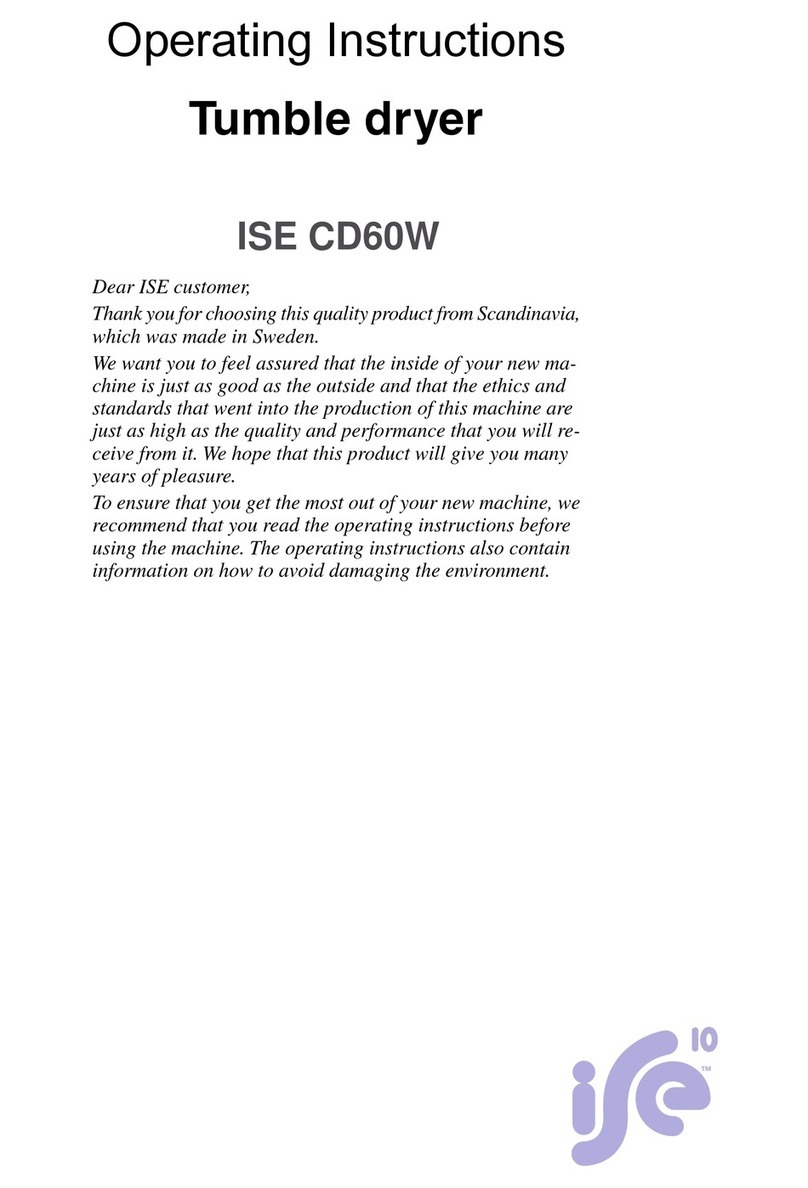Read the operating instructions and
keep them in a safe place!
•Electrical installation, if required, should be
carried out by a qualified electrician.
•The machine should only be used for
tumble-drying as described in these
instructions.
•Repairs and maintenance relating to safety or
performance must be carried out by a qualified
professional.
•Damaged mains cables must only be replaced
by a qualified electrician.
•Sufficient ventilation is required to prevent
smoke from open fires or fumes from
equipment burning other fuels being sucked
into the room when the tumble dryer is running.
•Do not dry dirty laundry in the tumble dryer.
•Items that are stained with e.g. cooking oil,
acetone, alcohol, petrol, kerosene, stain
remover, turpentine, wax and wax remover
should be washed in hot water with extra
detergent before they go in the tumbler dryer.
•Items such as foam rubber, latex, plastic,
waterproof textiles, rubber-coated items and
clothes and foam-rubber filled cushions must
not be dried in the tumbler dryer.
•Fabric softener or similar products should be
used as per the recommendations of the
detergent manufacturer.
•The machine is not designed to be used by
persons (even children) that are physically or
mentally handicapped or lack experience and
knowledge. Such persons must receive
instruction in how to use the machine from the
person responsible for their safety.
•Children must be watched to ensure they do
not play with the machine.
•Do not let lint accumulate near the dryer
•Do not install the dryer behind doors with lock,
sliding doors or next to the doors with hinges
so that opening of the dryer door will never be
hindered.
Caution!
Never stop a tumble dryer before the programme
is completed unless you immediately remove all
the laundry and spread it out so that the heat can
disperse.
Installation
See the "Installation" chapter.
Safety
•The machine must not be used for drying items
that have been dry-cleaned at home or fabrics
that may contain residues of flammable liquids.
•The tumble dryer is protected by an
overheating cut-out. This shuts off the machine
if the temperature gets too high.
•A float shuts off the machine in the event of a
blockage in the condensed water hose or if
there is a risk of the condensed water container
overflowing.
Caution!
When the tumble dryer is operating, the back of
the tumble dryer will get very hot. Leave the
machine to cool completely before touching the
back.
Interrupting a programme
You can stop a drying programme by:
•Open the door. The drum will then then stop
automatically.
•Press the main power switch.
•Press the Stop button for three seconds.
When you want to resume tumble-drying, simply
close the door and press the Start button.
Transport/Winter storage
If you need to move your machine or store it over
the winter in unheated premises, make sure that
you drain the condensed water container
beforehand.
4
Safety instructions




























